Name Pema Lingpa | ||
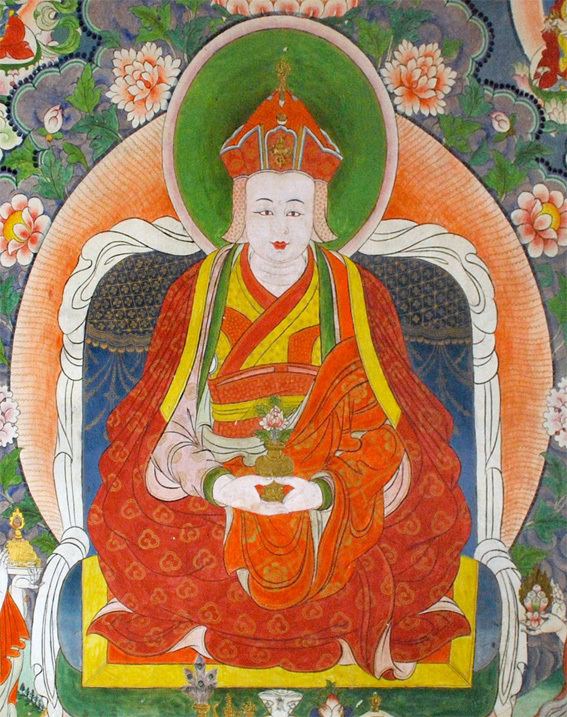 | ||
Died 1521, Tamzhing Monastery, Bhutan | ||
Dzogchen aus nyingma pema lingpa k nsang gond zur vereinigung aller intentionen des samantabhadra
Pema Lingpa or Padma Lingpa (Tibetan: པདྨ་གླིང་པ་, Wylie: pad+ma gling pa, 1450–1521) was a Bhutanese saint and siddha of the Nyingma school of Tibetan Buddhism. He is considered a terchen or "preeminent tertön" (Wylie: gter chen, discoverer of spiritual treasures) and is considered to be foremost of the "Five Tertön Kings" (Wylie: gter ston rgyal po lnga). In the history of the Nyingma school in Bhutan, Pema Lingpa is second only in importance to Padmasambhava.
Contents
- Dzogchen aus nyingma pema lingpa k nsang gond zur vereinigung aller intentionen des samantabhadra
- Pema lingpa treasure dance
- Biography
- Emanation lineages
- Peling Sungtrul incarnations
- Peling Tukse incarnations
- Peling Gyalse Gangteng Tulku incarnations
- Family lineages
- Tamzhing Chje
- References
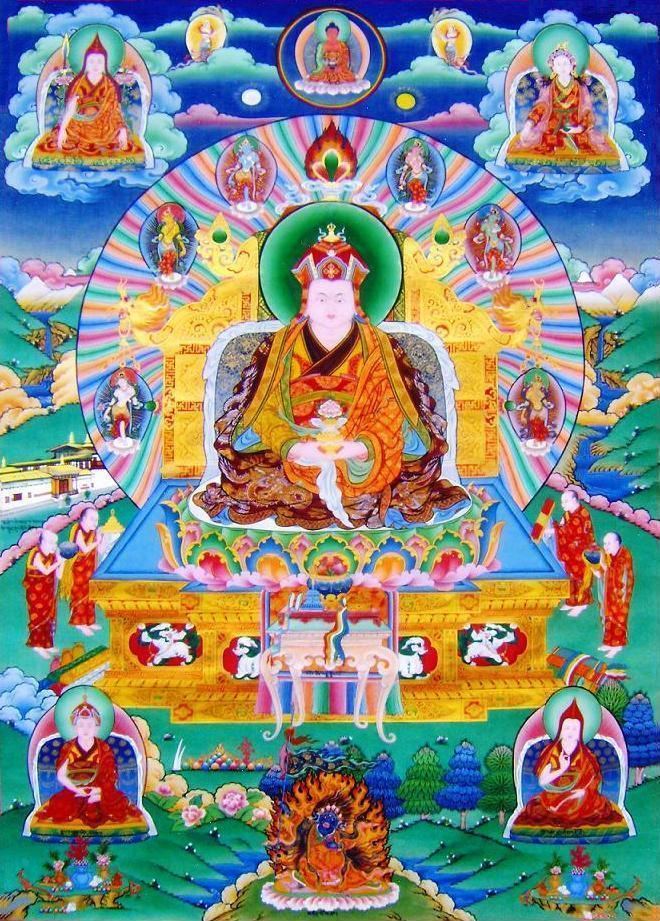
Pema lingpa treasure dance
Biography
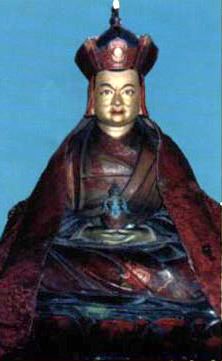
Pema Lingpa was born in Chel, part of the central Bhutanese region of Bumthang known as the “Wheel of Dharma.” His father was Lama Döndrup Zangpo of the Nyö clan, and his mother, Drogmo Pema Drolma, was bestowed with all the signs of a dakini. Their son was born among many miraculous signs. As an incarnation of the Omniscient One Drimé Ozer (Longchenpa), Pema Lingpa was extraordinary even as a child. He learned everything from reading and writing to ironwork and carpentry without receiving any instruction.
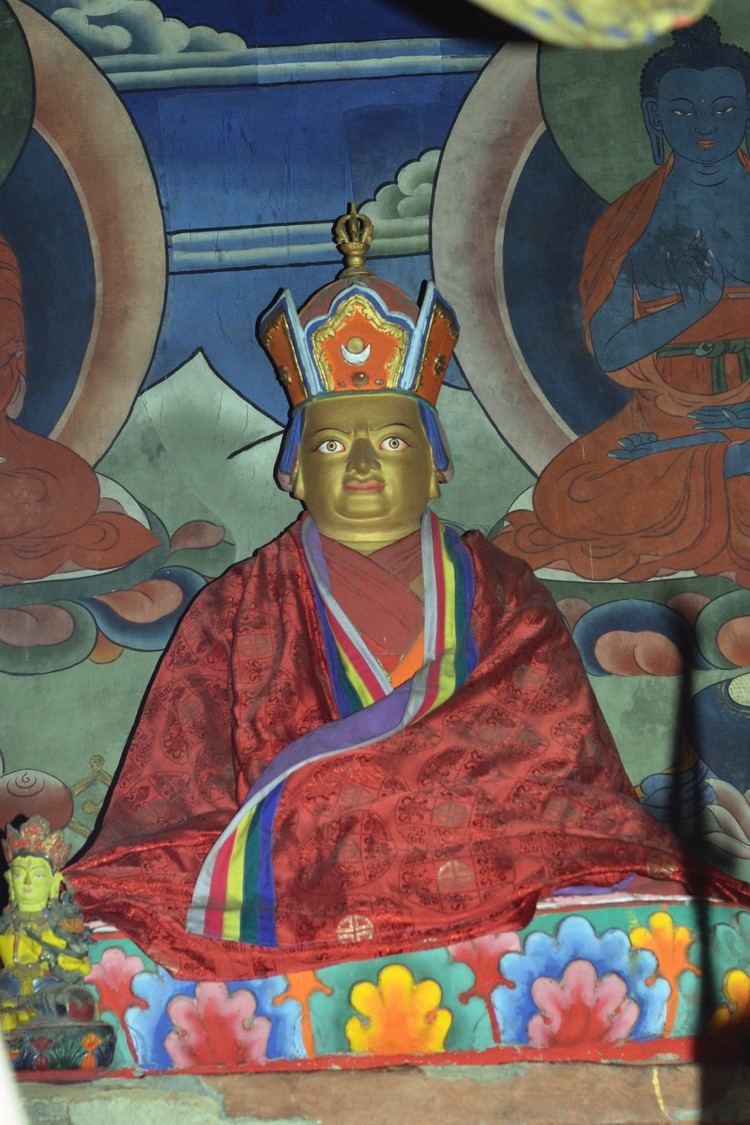
On the tenth day of the first month of autumn in a Monkey Year, Padmasambhava appeared before Pema Lingpa at the holy site of Yigé Drukma, blessed him, and placed in his hands an inventory of one hundred and eight major termas to be revealed. However, due to the karmic disposition of beings at that time, during his lifetime Pema Lingpa revealed only about half of the prophesied treasures. Nevertheless, the revealed treasures of Pema Lingpa contain the essence of all 108 treasures, which are summarized in the cycles of the three heart practices transmitted to Princess Pemasel by Guru Rinpoche: The Lama Jewel Ocean, The Union of Samantabhadra's Intentions, and The Great Compassionate One: The Lamp That Illuminates Darkness.
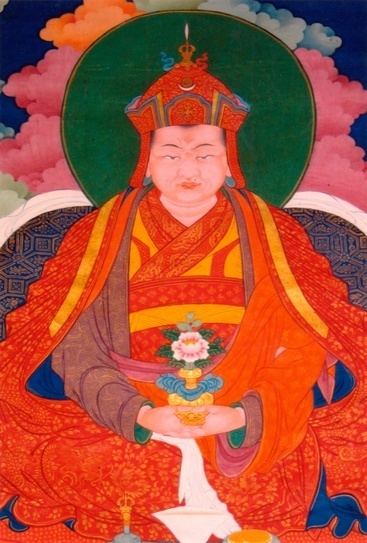
One well-known story of Pema Lingpa tells of his diving with a burning butter lamp into the Burning Lake in the Bumthang District of Bhutan. He told onlookers that if he was a false spirit his lamp would be extinguished. Disappearing into the bottom of the gorge and feared drowned, he emerged from the water with a statue the size of a fist and a treasure casket tucked under one arm, and the butter lamp still burning in the other.

Pema Lingpa was highly regarded by all four of the principal schools of Tibetan Buddhism. He spent his life revealing the precious treasures of Padmasambhava, giving empowerments and teachings, meditating in isolated locations, building and restoring monasteries, and establishing a tradition that endures to this day. Moreover, Pema Lingpa prophesied that in the future he would return as Longsal Nyingpo in the pure land of Pemako, and that those connected with him would be reborn in Pemakö as his students.
Notable descendants of Pema Lingpa include the House of Wangchuck and the 6th Dalai Lama.
The Pema Lingpa lineage of empowerments, transmissions and guidance continues today through the three lines of the Body, Speech, and Mind emanations of Pema Lingpa: the Gangteng, Sungtrul, and Tukse Rinpoches, all of who traditionally reside in Bhutan.
Emanation lineages
Traditionally, there are three main emanation lineages of Padma Lingpa recognized:
- the Peling Sungtrul incarnations: The incarnation of Padma Lingpa
- the Peling Thuksay incarnations: The incarnations of Padma Lingpa's son Thuksay Dawa Gyeltshen
- the Gangteng Truelku or Peling Gyalse incarnations: The incarnations of Gyalse Pema Thinley; son of Thuksay Dawa Gyeltshen.
They are known as "Peling Yab-sey-sum" meaning incarnations of Father, son and grandson, who are considered to be the combined body and activity incarnations. However mistakenly many refer to three of them as incarnations of speech, mind and body. .
Peling Sungtrul incarnations
The incarnations are:
Peling Tukse incarnations
The incarnations are:
Peling Gyalse (Gangteng Tulku) incarnations
The incarnations are:
Family lineages
Pema Lingpa's family line grew into a pre-eminent class of religious elites, known as Choje, who were pre-dominant in the Bhutanese religious and political sphere. The House of Wangchuck claims direct descent from Pema Lingpa, as do many other Himalayan religious elites.
Tamzhing Chöje
This Chöje family, with its main seat at Tamzhing Monastery, began with Pema Lingpa's son, Drakpa Gyalpo, who died without leaving an heir. The family line continued through Pema Lingpa's youngest son, Sangda.
